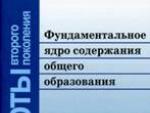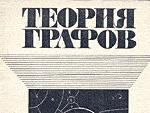Npi group. South Russian State Technical University
South-Russian State Technical University (SRSTU) is one of the oldest universities in Russia. The Don Cossacks stood up for its foundation, the best minds of the USSR were involved in its development. The university is one of the 100 best higher education institutions in the country.
Short story
In 2017, South Russian State Technical University celebrated the 110th anniversary of its foundation. They began to talk about the opening of an educational institution in the 1870s, but the decree on the institution of the university was published only in March 1907. The highest permission was to open a Polytechnic Institute in Novocherkassk. For students, departments were determined where they taught mining, engineering and reclamation work, chemical production and commercial activities.
Significant donations for the university were made by the Don Cossacks, who have long wanted to get highly qualified personnel for the thriving region. Despite financial injections, the university did not yet have a separate building; the students' classes were held in seven rented premises in different parts of the city. The South Russian State Technical University was officially opened on the day of the namesake of Tsarevich Alexei, for which it received the name Alexeevsky Don University.
The construction of the buildings started in October 1911; Bronislav Roguisky became the architect of the project. All work was completed only in 1930. Revolutionary throwing on the Cossack land took place violently. From 1918 to 1920, the South Russian State Technical University was named after Ataman Kaledin.
In 1930, the university was divided into several technical institutes, but in 1933, some of them were returned under the wing of the university. The head of the reorganization was S. Ordzhonikidze, as a result of the transformations the educational institution was named Novocherkassk Industrial Institute. After the war, the name changes again to
The university received its modern name in 2013. The celebrations for the 100th anniversary were widely celebrated in 2007. The party began at the university courtyard and continued at the city theater named after Komissarzhevskaya. The All-Russian Research Fair, which opened in October 2007, was also dedicated to the anniversary of the university.
Description
GOU VPO Platov South Russian State Technical University is the oldest university in the south of the country. Training of specialists in higher education programs is carried out in 5 institutes, in 10 faculties. The structure of the educational institution includes several branches. More than 2 thousand applicants become students of the budgetary form of education every year.
One of the largest areas of study at SRSPU (NPI) is education in postgraduate and doctoral programs. More than 300 graduate students continue their studies in 54 scientific specialties, and 21 scientific specialties are available for doctoral training.
Material base
South-Russian State Technical University is located in a unique architectural ensemble, which includes buildings and structures:
- Main building.
- Five separate buildings of the faculties - mining, robotic, chemical, energy and laboratory.
- Sports facilities - tennis court, indoor pool, gymnastics hall, active sports stadium, etc.
- Library with a huge fund of scientific, educational, methodological literature, periodicals. Currently, work is underway to digitize the funds.
The campus (10 dormitories with its own infrastructure) is located in convenient proximity to the educational complex. Four old buildings of the university (mining, main, energy, chemical) belong to the architectural heritage of federal significance. At the beginning of the 21st century, a chapel was built on the territory of the university in honor of the Orthodox saint and the patroness of students - the great martyr Tatiana. Education of the younger generation, scientific activity and education of young people - these are the main goals of the South Russian State Technical University.

Faculties, institutes, branches
The total staff is almost 4 thousand people, of which more than 2 thousand are the teaching staff of the university. More than 15 thousand students annually receive specialized education in full-time education, more than 4 thousand people in the part-time education department, more than 1 thousand students study in the part-time department.
South-Russian State Technical University invites to the following faculties:
- Information technology, management.
- Innovators, production organization.
- Mechanical, construction, power engineering departments.
- Technological, agro-industrial, electromechanical.
- Mining and oil and gas business, geology.
- Distance learning.
Also, the educational structure includes institutions:
- Fundamental
- Additional education.
- Military.
- International education.
- Graduate School of Management.
South-Russian State Technical University (Novocherkassk) has branches:
- Kamensk-Shakhtinsky (3 departments).
- Bagaevsky (3 educational specialties).
- Shakhtinsky (7 departments and a technical school).

Specialties
South-Russian State Technical University (NPI) is included in the list of one hundred best educational institutions in the country and is a diversified university.
Applicants are invited to acquire knowledge in such specialties:
- Mechanical engineering; jurisprudence; mathematics and mechanics.
- Transport equipment and technologies; construction technologies and equipment.
- Sociology, social work; biotechnology and industrial ecology.
- Heat and power engineering; materials technology.
- Computer Science and Informatics; economics and Management.
- Instrumentation, photonics, biochemical and optical systems, technologies.
- Applied geology, oil and gas and mining, geodesy.
- Environmental management, technosphere safety.
- Light industry technologies; types of applied arts and fine arts.
- Management in technical systems; radio electronics, electronics and communication systems.

Training levels of specialists
Novocherkassk South Russian State Technical University trains specialists of the following training levels:
- Bachelor's degree - 40 areas of training for stationary and part-time studies.
- Specialty - 5 directions, full-time and part-time forms of study.
- Master's degree - 42 directions, full-time and part-time education.
Military Institute
The Military Institute, which is preparing reserve officers, deserves special words. Implemented levels of training - bachelor's, specialty, master's degree.
Training is carried out at the departments:
- Engineering troops.
- Signal troops.
- Air Force.
Military specialties:
- Informatics and computer engineering.
- Information systems and technologies.
- Nanoelectronics and Electronics.
- Management in technical systems.
Upon graduation, the graduate receives the military rank of "reserve lieutenant".
Positive reviews
South-Russian received a positive character from graduates and current students. Most of them praise alma mater for the best years of their lives, a huge amount of useful knowledge, an amazing number of new discoveries and vivid impressions.
Former students believe that at one time they made the right choice of an educational institution and specialty. The overwhelming majority of students study at technical and engineering faculties and declare with confidence that as a result they receive a demanded specialty and are going to work in their profile.
This confidence is confirmed by recent graduates, almost all of whom found work in the industry for which they received theoretical knowledge.
The reviews mention that the teaching staff is very fond of diligent students, teachers are ready to answer all questions in their course, give additional knowledge and try to present the material in such a way that it is understandable to everyone. The amount of knowledge given is very large, which takes time to master and successfully pass the sessions, but this does not prevent young people from taking part in various activities.

About everyday life, leisure and architecture
Social and cultural life is no less intense than the educational process. Students note that circles and events can be so carried away that the time for exams will come imperceptibly. For this reason, it is advised to devote more time to lectures and homework, being distracted by activities only for a short break. One of the positive features of the university is the active work of the trade union - students can purchase vouchers to university camp sites at an affordable price and relax during the holidays.
Living in a hostel was described by many as a baptism of fire, and this is not due to bad conditions, but to separation from home and parents. Students report that life on campus is quite comfortable. There are buildings where several people live in a room with conveniences in the corridor, most of the nonresidents live in such hostels. The best building is considered "dvenashka" - a hotel-type hostel number 12, where a separate sanitary block is provided for several rooms.
The university provides several options for organizing meals: there are small buffets in the hostels, in the main building there is a large comfortable dining room with excellent cuisine and low prices. In all the reviews, former and current students talk about the university with admiration and love. The beauty of the buildings, old buildings, a covered courtyard where all significant events take place - this makes up the outline of an excellent higher education system, unites whole generations together with a single history and goals. Many shared stories that parents, brothers, sisters, and sometimes grandmothers studied at SRSPU (NPI), who spoke about the university with admiration, love and respect, which determined the choice of many applicants.
In addition to students, tourists and townspeople left their comments about the university. They claim that the university campus is one of the best places in Russia, where the architecture has been preserved intact, and the complex of buildings itself has never changed its purpose. Visitors believe that getting inside the main building will be a great success for everyone - the interior decoration has not changed and has been perfectly restored.

Negative reviews
Negative reviews describe the university as an institution that has lost its former glory. The reviews say that if you want to pass the session, you can use financial costs in favor of the teaching staff. It is also indicated that a student who simply attends classes will always receive a positive, albeit low grade, and eventually become a certified specialist.
Also, students write that not all teachers are professionals in their field. It is pointed out that in some lectures one can fall asleep, but it is rightly noted that some of the teachers lecture so brilliantly that every time there is a full house in the classrooms. Many complain that the main teaching staff is represented by retirees, for whom it is already difficult to deal with curious students, and this significantly lowers the degree of enthusiasm.
In general, reviews about the South Russian State University. Platov positive. Students like to be involved in the long history of the university, to be part of a large scientific community and to receive a modern education. In the stories of students, there is a strong belief in the relevance of their knowledge, their benefits for future work and life.

Useful addresses
To become part of the student body, it is worth enrolling in the Novocherkassk South Russian State Technical University. The address of the institution is Prosvescheniya street, building 132.
The student town is located at Mikhailovskaya street, building 167 / Troitskaya street, building 98.
(DB Wikigida)
Novocherkassk
History
Don Polytechnic Institute was opened on October 5 (18) and became the first higher educational institution in the south of the Russian Empire. At that time, the institute did not yet have its own buildings and was located in seven buildings of the city, located at a distance from each other. In 1909, the institute was named after Tsarevich Alexei, and it began to be called - Alekseevsk Don Polytechnic Institute.
The construction of the buildings began on October 9, 1911 according to the project of the architect Roguisky. The project included the main, robotic (modern name), chemical, mining corps and was fully completed only in 1930.
After 1917
From October 1918 to 1920 the institute bore the name of the ataman A.M. Kaledin, and then again it was the Donskoy Polytechnic. In 1930, the Don Polytechnic Institute was divided into several independent higher technical educational institutions, some of which were re-united into a single institute in 1933, which began to be called the North Caucasian Industrial Institute, and a year later (in 1934) was named Novocherkassk industrial institute. Sergo Ordzhonikidze.
In 1948 the institute received a new name - Novocherkassk Polytechnic Institute. This name remained until 1993.
The university received the status of Novocherkassk State Technical University on July 5, 1993.
On February 2, 1999, it was renamed into the South Russian State Technical University (Novocherkassk Polytechnic Institute).
- University buildings in the 1930s
| External images | |
|---|---|
| Obverse of the medal for the 100th anniversary | |
| Reverse medal | |
On October 18-19, 2007, festive events took place on the occasion of the 100th anniversary of the oldest university in the south of Russia. These days, festive events took place in the city and the university itself, which began in the Covered courtyard of the university and ended with a solemn meeting in the city theater. Komissarzhevskaya. On October 17, the All-Russian Exhibition-Fair of Research Works and Innovation Activities, dedicated to the 100th anniversary of the foundation of the university, was opened at SRSPU (NPI). The opening was attended by: the mayor of Novocherkassk, the head of the city council, the university administration. By order of the university, Gosznak produced 20 thousand envelopes with a view of the main building and a stamp, which was used for special cancellation. Commemorative cancellation of the "first day" was organized in the main building of the university. In a solemn atmosphere in the presence of teachers, university graduates of different years and guests, the right to be the first to put a commemorative stamp was given to the director of the Rostov branch of the Russian Post V. Gorbaenko (a graduate of this educational institution in 1980) and vice-rector for research and innovation - A. Pavlenko ... Also, special cancellation was made on postcards dedicated to the YRSPU (NPI). ... In the workshop of the Don medalist, Nikolai Shevkunov, commemorative medals dedicated to this significant event were made.
Until 2008, there was a presidential board at the university, its last president was V.E. Shukshunov. Currently, YRSPU (NPI) is managed by the acting rector.
Official titles
Rectors
Rectors were (by year of appointment):
Description
The university includes:
- 10 faculties (including the faculty of open distance learning);
- 4 institutes
- 2 institutes as branches;
- 1 college;
- inter-sectoral regional center for advanced training and professional retraining of specialists,
- 12 research institutes;
- 7 research and production enterprises;
- publishing organizations and other departments that support the activities of the university.
The SRSPU employs 3919 employees, including: 2054 people - the teaching staff.
22,000 students study at its faculties and branches, including: more than 15,000 full-time students, about 4,000 part-time students, about 2,000 part-time studies. More than 1,000 students undergo retraining every year.
The university houses the largest university scientific and technical library in the south of Russia. The library fund has more than 3 million publications.
The university employs the oldest primary trade union organizations of employees and students in southern Russia.
The University publishes periodicals:
- "Personnel of Industry" is a large-circulation newspaper of the YRSPU (NPI). Published since December 1929.
- Scientific and technical journal “Izvestiya Vysshaya Educational Institutions. Electromechanics ". Published since January 1958.
University staff
The staff of the faculty of the university:
- 255 doctors of sciences, professors,
- 1058 candidates of sciences, associate professors,
- 13 honored workers of science and technology,
- 2 honored cultural workers,
- 9 honored workers of higher education,
- 109 academicians of industry and public academies,
- 1 Corresponding Member of the RAS.
University buildings
The complex of buildings of the South Russian State Polytechnic University includes:
- main building;
- robotic building;
- chemical building;
- mountain body;
- energy building;
- laboratory building;
- Educational library building (concert hall);
- sports facilities (stadium, swimming pool, tennis court, gymnasium, athletics arena).
The main, chemical, mining and energy buildings are architectural monuments of federal significance.
Anthem
The verse of Vladimir Abramovich Schwartz, a member of the university literary group, a 1964 NPI graduate - "I love you, NPI" - was set to music and became the anthem of polytechnics.
Research work
At YRSPU (NPI), work is underway in 26 scientific areas, including powder metallurgy, the theory of ore formation in volcanic sedimentary strata, micrometallurgy of semiconductor structures, on antifriction materials, polymer synthesis, effective methods for solving problems of mathematical physics, simulator construction and others.
Research and production and innovation activities are carried out at faculties, in branch institutes, educational and research and production complexes (UPPK), Donskoy Technological Park, research and production and other subdivisions of the base university, scientific complexes of institutes and branches. More than ten UNPCs function as part of SRSPU (NPI). Each includes one or more faculties, departments, research institutes (SRI) and other research and production divisions of the university, as well as organizations, enterprises that are not divisions of the university. Six research institutes operate on the basis of departments, research laboratories, pilot production facilities of the university:
- Research Institute of Energy;
- Research Institute of Water Supply and Sanitation;
- Research Institute of Electromechanics;
- Research Institute of Computing, Information and Control Systems;
- Research Institute of the History of the Cossacks and the Development of Cossack Regions;
- Center for Collective Use "Nanotechnology".
Branches
Faculties
- Faculty of Information Technology and Management
- Faculty of Geology, Mining and Oil and Gas Engineering
- Faculty of Mechanics
- Faculty of Civil Engineering
- Faculty of Technology
- Faculty of Energy
- Faculty of Innovation and Industrial Engineering
- Faculty of Transport and Logistics
- Faculty of military training
- Faculty of Open and Distance Learning
Memory
Commemorative plaques
Monuments
On the territory of the university and outside it there are monuments erected in honor of the graduates.

Famous people who studied and worked in DPI-NPI-YURGTU-YRSPU
Among the graduates of the Novocherkassk Polytechnic University:
- 19 laureates of the Lenin Prize;
- 64 laureates of the State Prize;
- 35 honored workers of science and technology;
- 28 Heroes of Socialist Labor:
- twice Hero of Socialist Labor - Smirnov, Leonid Vasilievich;
- Heroes of the Soviet Union and Russia:
Every year, usually in the summer, there are meetings of university graduates of different years of graduation.
Portrait gallery
The gallery of portraits of university professors by artist Ivan Krylov is located on the second floor of the Main Building, on the outer wall of the assembly hall.
Notes
- YRSPU (NPI) :: GRADUATE :: Historical page
- Anniversary NPI-100 years (unavailable link)
South-Russian State Technical University (Novocherkassk Polytechnic Institute) - the largest university in the South of Russia. IN YURSTU more than 24 thousand students and almost 4 thousand employees are trained. During its more than 100-year history NPI became known both in Russia and all over the world. Abbreviation NPI probably known to almost every resident of Russia.
Built according to the project of the architect Roguisky, it is an architectural monument, and it amazes with its grandeur and beauty.
University in Novocherkassk consists of 11 faculties:
- Faculty of Energy
- Faculty of Information Technology and Management
- Faculty of Humanities and Socio-Economic Education
- Faculty of Mechanics
- Faculty of Civil Engineering
- Faculty of Chemistry and Technology
- Faculty of Electromechanics, Mechatronics of Technological Machines
- Faculty of military training
- Faculty of Physics and Mathematics
- Mining and Geological Faculty
- Faculty of Open and Distance Learning
In addition, students are trained by the branches of the university:
- Shakhty Institute (branch)
- Volgodonsk Institute (branch)
- Kamensk Institute (branch)
- Kavminvodsky Institute (branch)
- Rostov branch of SRSTU (NPI)
- Adyghe branch of YRSTU (NPI)
- Krasnosulinsky branch of SRSTU (NPI)
- Novoshakhtinsky branch of SRSTU (NPI)
- Belokalitvensky branch of YURSTU (NPI)
- Bagaevsky branch of SRSTU (NPI)
Photos of SRSTU (NPI)
60s (photo from the YRSTU library website)



University anthem
In dust layered over the years
"I love you, NPI!"
Maybe it's a disheveled boy
Just from the school bench:
Amazed, happy, enthusiastic
I became your student, NPI.
Maybe it's pigtails, but bows,
Yes, half the sky in huge eyes,
Finally, having overcome the math,
She signed on gray stones.
Maybe after the defense of the "diploma"
Someone stood here alone for a long time -
There was happiness, like "Indoor", great
And a little ache in my chest.
Maybe it's a man graying
I remembered my best years.
And, like a fragile, fragile girl,
I stroked your stones, NPI.
On the stones darkened by the daughter,
In dust layered over the years
Someone wrote in a sweeping handwriting:
"I love you, NPI!"
History

Temporary building of DPI
South-Russian State Technical University (Novocherkassk Polytechnic Institute) is the first higher educational institution in the south of Russia. By the Resolution of the Council of Ministers of Russia, adopted in January 1907 year , envisaged "To establish a Polytechnic Institute in Novocherkassk, using for this purpose the funds and personnel of the Warsaw Polytechnic"... Student riots 1906 years led to temporary closure by the authorities Russian Empire Warsaw (Russian) Polytechnic Institute, and its leading employees were sent to Novocherkassk and formed the core of the teaching staff of the new institute.
100th anniversary of the university
These days in the city and the university itself, festive events were held, which began in the Covered courtyard of the university and ended with a solemn meeting in the city theater named after Komissarzhevskaya.
In the workshop of the Don medalist, Nikolai Shevkunov, commemorative medals dedicated to this significant event were made.
Description
University composition
The university includes:
- 4 institutes with rights branches ;
- 10 branches;
- 3 colleges;
- inter-sectoral regional center for advanced training and professional retraining of specialists,
- 12 research institutes;
- 7 research and production enterprises;
- publishing organizations and other departments that support the activities of the university.
SURSTU employs 3919 employees, including: 2054 people - teaching staff.
22,000 students study at its faculties and branches, including: more than 15,000 full-time students, about 4,000 part-time students, about 2,000 part-time studies. More than 1,000 students undergo retraining every year.
The university houses the largest university scientific and technical library in the south of Russia. The library fund has more than 3 million publications.
The university also publishes periodicals:
- "Personnel of Industry" is a large-circulation newspaper of YURSTU (NPI). Published since December 1929 year.
- Scientific and technical journal “Izvestiya Vysshaya Educational Institutions. Electromechanics ". Published since January 1958 year.
University staff
The staff of the faculty of the university:
- 13 honored workers of science and technology,
- 2 honored cultural workers,
- 9 honored workers of higher education,
- 109 academicians of industry and public academies,
- 1 Corresponding Member RAS.
University rectors

Main building on its 100th anniversary
For more than 100-year history of the university, its rectors were:
University buildings
The complex of buildings of the South Russian State Technical University includes:
- main building;
- robotic building;
- chemical building;
- mountain body;
- energy building;
- laboratory building;
- athletic facilities ( stadium , swimming pool, tennis court , Gym, track and field arena);
- at the present time the construction of an educational and library building is underway.
The main, chemical, mining and energy buildings are architectural monuments of federal significance.
Commemorative plaques
Commemorative plaque on the main building

New main board location
The largest and most important NPI commemorative plaque with the text:
“The complex of buildings of the Novocherkassk Polytechnic Institute (Main building. Chemical. Mining and energy) is an architectural monument of republican significance. Protected by the Law. The complex was built in 1911-1930. Designed by architect B. Roguisky (1861-1921). "
installed on the facade of the Main Building December 28th 1985 year ... IN 2010 year , in connection with the installation on the facade of the university two new boards with the name of the educational institution in Russian and English, this board was moved to the right wing the main building.
Many commemorative plaques were made and installed at the expense of specialized departments. So, at the Faculty of Mechanics, a memorial plaque was opened A. S. Lyshevsky ; at the power engineering department (in 1981 year) - Honored Worker of Science and Technology, Professor A. D. Drozdov ; at the Faculty of Mining and Geology - Professor, Rector of NPI from to 1974 years - M. A. Frolov ... A memorial plaque was opened N. D. Mizorny - the first head of the NPI military department (with 1944 year), which is Hero of the Soviet Union ... The commemorative plaque was opened in 1983 year with the assistance of the leadership of the military department. IN 1980 year to the 100th anniversary of the outstanding scientist geologist with a world name - P.N. Chirvinsky - a memorial plaque was opened on the building of the Mining and Geological Faculty.
Anthem
Verse by Vladimir Abramovich Schwartz, a member of the university literary group, a graduate of the NPI 1964 year - “I love you, NPI” - set to music and became the anthem of polytechnics.
Research work

The first university in the south of Russia
SRSTU (NPI) is working in 26 scientific areas, including powder metallurgy , theory of ore formation in volcanic sedimentary strata, micrometallurgy of semiconductor structures, on antifriction materials, synthesis polymers , effective methods for solving problems of mathematical physics, simulator construction and others.
Research and production and innovation activities are carried out at faculties, in branch institutes, educational and research and production complexes (UPPK), Donskoy Technological Park, research and production and other subdivisions of the base university, scientific complexes of institutes and branches. As part of SRSTU (NPI), there are more than ten UNPK. Each includes one or more faculties, departments, research institutes ( Research institutes) and other research and production divisions of the university, as well as organizations, enterprises that are not divisions of the university. On the basis of departments, scientific laboratories, experimental production facilities of the university, there are 12 research institutes:
- Research Institute of Energy;
- Research Institute of Applied Electrochemistry;
- Research Institute of Materials Science;
- Research Institute of Industrial and Environmental Safety;
- Research Institute of Technology;
- Research Institute of Water Supply and Sanitation;
- Research Institute of Electromechanics;
- Research Institute of Computing, Information and Control Systems;
- Research Institute of Development and Processing of Natural Resources;
- Research Institute of Economic Problems and Social Ecology of Regions;
- Research Institute of Power Engineering;
- Research Institute of Microelectronics.
Branches

Kamensk branch of YRSTU
Faculty of Geology, Mining and Petroleum Engineering
Previously called Mining and Geological Faculty (GGF) - one of the first at the university, exists since 1907 year and is located in a separate building. More than 800 students study at the faculty. The educational process is conducted by 93 teachers, including 23 professors and doctors of sciences, 49 associate professors and candidates of sciences, 12 members and corresponding members of international and Russian academies of sciences.
The faculty includes 9 departments:
- "Drilling of oil and gas wells and geophysics";
- "Applied Geology";
- "Mine surveying and geodesy";
- "Applied Geodesy";
- “Life safety and environmental protection”;
- "Underground mining of mineral deposits";
- "Mining engineering".
- Engineers:
- 120101 - Applied Geodesy;
- 130201 - Geophysical methods of prospecting and prospecting for minerals;
- 130301 - Geological survey, prospecting and exploration of mineral deposits;
- 130302 - Search and exploration of underground waters and engineering-geological surveys;
- 130402 - Mine surveying;
- 130404 - Underground mining of mineral deposits;
- 130504 - Drilling oil and gas wells.
- Bachelors:
- 120100 - Geodesy;
- 130400 - Mining;
- 130500 - Oil and gas business.
Faculty of Mechanics
Faculty of Mechanics (MF) - is one of the oldest faculties of the university, located in the main building. Almost half of the students of the first enrollment of the Don Polytechnic Institute in 1907 year were the mechanics.
The faculty has about 1,000 students in six areas. 103 teachers, including 14 doctors of sciences, professors and 64 candidates of sciences, associate professors, take part in the educational process. Among them, 1 Honored Worker of Science and Technology of the Russian Federation, 10 Honored and Honored Workers of the Higher School.
The Faculty of Mechanics includes 6 departments, 5 of which graduate:
- « Internal combustion engines "(ICE);
- "Materials Science and Technology of Materials" (M&M);
- « Engineering technology "(TM);
- "Fundamentals of Machine Design" (OKM);
- "Automobile transport and traffic management" (ATiODD);
- "Engineering and Computer Graphics" (IiKG).
Specialists in the following specialties and areas are graduated:
- Engineers:
- 150108 - Powder metallurgy, composite materials, coatings;
- 150205 - Equipment and technology for increasing wear resistance and restoring machine parts and apparatus;
- 190601 - Automobiles and Automotive Industry;
- 190702 - Organization and traffic safety.
- Bachelors:
- 140500 - Power engineering;
- 150100 - Metallurgy;
- 150900 - Technology, equipment and automation of engineering industries;
- 190500 - Operation of vehicles.
Faculty of Civil Engineering
Faculty of Civil Engineering (SF) - was formed on the basis of the Civil Engineering Faculty of the Warsaw Polytechnic Institute, transferred to Novocherkassk, and opened on October 5 1907 year as an engineering and land reclamation faculty. It is also the oldest faculty of the university, located in the main building. Currently, the number of full-time students is more than 800 people. The total number of teachers is over 70 people.
- "Industrial and Civil Engineering, Geotechnics and Foundation Engineering";
- "Construction and Architecture";
- "Water management of enterprises and settlements";
- "Engineering ecology and environmental protection";
- "Resistance of materials, construction and applied mechanics".
Specialists in the following specialties and areas are graduated:
- Engineers:
- 270101 - Mechanical equipment and technological complexes of enterprises of building materials, products and structures;
- 270102 - Industrial and civil construction;
- 270105 - Urban construction and economy;
- 270106 - Production of building materials, products and structures;
- 270112 - Water supply and sewerage;
- 280102 - Safety of technological processes and production;
- 280202 - Engineering environmental protection;
- 280302 - Integrated use and protection of water resources.
- Bachelors:
- 270100 - Construction;
- 280200 - Environmental protection.
Faculty of Chemistry and Technology
Faculty of Chemistry and Technology (CTF) - open in 1907 year , located in a separate building. Training is carried out in 7 areas of bachelor's degree and 5 educational programs for the preparation of masters, currently there are about 670 students. The HTF employs 93 teachers, including members of various academies of Russia , honored workers of science and technology, honorary workers of higher professional education of the Russian Federation, professors and doctors of sciences, associate professors and candidates of sciences.
The faculty includes 5 departments:
- "Technology of inorganic and organic substances";
- "Technology of glass ceramics and binders";
- "Technology of electrochemical production, analytical chemistry, standardization and certification";
- General and Inorganic Chemistry;
- "Chemical technology of macromolecular compounds, organic, physical and colloidal chemistry."
Bachelors and masters are issued in the following specialties and areas:
- Bachelors:
- Direction:
- 240100
- Chemical Technology.
- Profiles:
- Electrochemical production technology,
- Chemical technology of high molecular weight compounds;
- Direction:
- 221700
- Standardization and metrology.
- Profiles:
- Standardization and certification
- Direction:
- 24100
- Energy and resource saving processes in chemical technology, petrochemistry and biotechnology.
- Profiles:
- Rational use of material and energy resources
- Direction:
- 260100
- Food products from vegetable raw materials.
- Profiles:
- Fermentation and wine-making technology
- Direction:
- 261400
- Technology of artistic processing of materials.
- Profiles:
- Artistic processing technology
- Direction:
- 261700
- Technology of printing and packaging production.
- Profiles:
- Printing technology
- Direction:
- 020100
- Chemistry.
- Profiles:
- Chemistry
- Masters:
- Direction:
- 240100
- Chemical Technology.
- Specialized programs:
- Chemical technology of inorganic substances,
- Electrochemical processes and production,
- Chemical technology of refractory non-metallic and silicate materials,
- Chemical technology of organic substances,
- Polymer technology and processing;
Faculty of Energy

Energy Faculty building

Entrance to the departments
Faculty of Energy (EF) - was organized in 1933 year , located in a separate building. At present, the number of full-time students is over 1,400 people. The total number of teachers, researchers, engineers, graduate students, service personnel is more than 150 people, including 11 professors, doctors of technical sciences and 58 associate professors, candidates of technical sciences.
The faculty includes 7 departments:
- "Electric stations";
- "Automated power systems" ";
- "Power supply of industrial enterprises and cities";
- "Thermal Power Plants";
- "Steam generator building";
- "Theoretical Foundations of Heat Engineering";
- "Environmental Engineering".
Specialists in the following specialties and areas are graduated:
- Engineers:
- 140101 - Thermal power stations;
- 140106 - Power supply of enterprises;
- 140203 - Relay protection and automation of electric power systems;
- 140204 - Power stations;
- 140205 - Electric power systems and networks;
- 140211 - Power supply;
- 140501 - Internal combustion engines;
- 140502 - Boiler and reactor building.
- Bachelors:
- 140100 - Heat power engineering;
- 140200 - Electric power industry;
- 140500 - Power engineering.
Faculty of Physics and Mathematics
Faculty of Physics and Mathematics (FMF) - organized in 2000 year ... Students are trained in 8 specialties.
The faculty includes 4 departments, 2 of which are graduating:
- "Physics";
- "Applied math";
- "Higher Mathematics";
- "Theoretical Mechanics".
Specialists in the following specialties and areas are graduated:
- Engineers:
- 050201 - Mathematics;
- 080801 - Applied Informatics (in economics);
- 210100 - Electronics and Microelectronics;
- 210104 - Microelectronics and Solid State Electronics;
- 210106 - Industrial Electronics;
- 210601 - Nanotechnology in Electronics;
- 210602 - Nanomaterials;
- 230401 - Applied Mathematics.
Faculty of Information Technology
Faculty of Information Technology (FIT) - formed in 1986 year ... It was formerly called the Faculty of Systems Engineering and Robotics (FSTiR). Specialists are being trained in 6 areas of training bachelors , 12 specialties of training specialists and 3 areas of specialized training masters.
The faculty includes 4 departments:
- "Information and Measuring Systems and Technologies" (IIST);
- "Electronic computers" (ECM);
- "Computer software" (POVT);
- "Informatics" (I).
Specialists in the following specialties and areas are graduated:
- Engineers:
- 010503 - Software and administration of information systems;
- 230102 - Automated information processing and control systems;
- 230104 - Computer-aided design systems;
- 230105 - Software for computer technology and automated systems;
- 200106 - Information-measuring equipment and technologies;
- 200401 - Biotechnical and medical devices and systems;
- 230101 - Computing machines, complexes, systems and networks;
- 230201 - Information systems and technologies;
- 230204 - Information technology in the media industry.
- Bachelors:
- 200100 - Instrumentation;
- 200300 - Biomedical Engineering;
- 230100 - Informatics and computer engineering;
- 230200 - Information systems.
Faculty of Electromechanics, Mechatronics and Technological Machines
Faculty of Electromechanics, Mechatronics and Technological Machines (FEM & TM) - created on the basis of the "Electromechanical Faculty" (EMF) and the "Faculty of Technological Machines and Robots" (FTMiR) in 2001 year ... The faculty has 1,681 students in 7 directions, including 15 specialties. 142 teachers, including 15 professors, 14 doctors of sciences, 91 associate professors, candidates of sciences, 1 honored worker of science and technology of the higher school, 13 honored and honorary workers of the Higher school, 6 academicians take part in the educational process.








 Metabolic workout for weight loss women
Metabolic workout for weight loss women How to choose a thermos and thermo mug: your warm guide
How to choose a thermos and thermo mug: your warm guide About the benefits of porridge. Porridge for breakfast. How are cereals good for health? The benefits and harms of pearl barley
About the benefits of porridge. Porridge for breakfast. How are cereals good for health? The benefits and harms of pearl barley Should you start a relationship with your ex again?
Should you start a relationship with your ex again?